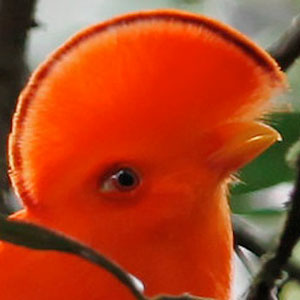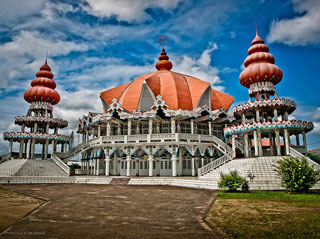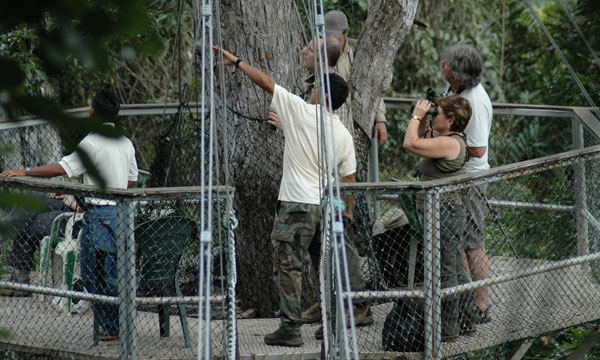Guyana, Suriname and French Guiana (Guyane)
Largely untouched and undeveloped, the Guianas - Guyana, Suriname, and French Guiana (Guyane) - are home to some of the world's most endangered animals and the last remaining tracts of pristine rainforest on the continent.
The Guiana Shield Region of northern South America covers 2.5 million square kilometers of mountains, pristine forests, wetlands and savanna - approximately 13 percent of the entire South American continent. It was formed during the Precambrian era and is one of the most ancient landscapes in the world. The terms Guiana and Guayana are two universally accepted variants of an Amerindian word interpreted to mean 'land of plenty water.'
 This region contains the world's highest percentage of intact tropical rainforest, with some 80 to 90% still in pristine condition. An estimated 40% of the flowering plant species in the Guianas are found only here. Scientific explorations of the area are still discovering species new to science. Likewise, the freshwater systems of the Guianas, together with the Amazon River Basin, hold the greatest concentration of freshwater biodiversity in the world. The Guianas' coasts are also exceptional in their conservation importance. The mangrove forests of the Guianas are among the least degraded in the world.
This region contains the world's highest percentage of intact tropical rainforest, with some 80 to 90% still in pristine condition. An estimated 40% of the flowering plant species in the Guianas are found only here. Scientific explorations of the area are still discovering species new to science. Likewise, the freshwater systems of the Guianas, together with the Amazon River Basin, hold the greatest concentration of freshwater biodiversity in the world. The Guianas' coasts are also exceptional in their conservation importance. The mangrove forests of the Guianas are among the least degraded in the world.
Millions of migratory birds from North America winter along the coasts here, while the beaches serve as nesting ground to four species of endangered marine turtles. The largest population of the Atlantic leatherback turtles in the world nests on the beaches of the Guianas.
However, since the Guianas are rich in natural resources, such as gold, diamond, and timber, large-scale threats to the forests and freshwaters of the region exist. For example, the rapid expansion of small-scale goldmining in the Guianas, with increasing use of mercury is of growing concern, especially as global prices for gold experience historical highs.
The Giants of Guyana
Guyana is home to some of the biggest, noisiest and weirdest animals in South America as well as enough accessible bird species to impress even the most seasoned birdwatchers. Research has identified more than 225 species of mammals, at least 880 species of reptiles and amphibians, more than 810 species of birds and 6,500 species of plants. Rather than attempt to index the plethora of species inhabiting Guyana in these pages, we highly recommend you obtain a copy of the Bradt Guide to Guyana which makes a reasonable attempt to summarize the vast array of species that call Guyana home. The 2008 BBC documentary Lost Land of the Jaguar if you can get a hold of it, is another excellent way to meet some of Guyana's notable flora and fauna residents, many of which remain unknown to science.
Suriname
 Suriname - formerly Dutch Guiana - is located on the Caribbean coast of South America between Guyana and French Guyana. It is a heavily forested country covered by large areas of biological diversity. Most of Suriname's small population speaks Dutch and lives in the coastal area in and around the capital city. Suriname's interior forest is occupied by very small populations of Amerindians and descendants of African slaves - the Maroons - who live scattered along its major rivers.
Suriname - formerly Dutch Guiana - is located on the Caribbean coast of South America between Guyana and French Guyana. It is a heavily forested country covered by large areas of biological diversity. Most of Suriname's small population speaks Dutch and lives in the coastal area in and around the capital city. Suriname's interior forest is occupied by very small populations of Amerindians and descendants of African slaves - the Maroons - who live scattered along its major rivers.
Paramaribo, the capital, is a UNESCO World Heritage City recognized as an exceptional example of European architecture fused with indigenous South American influences. Indeed, the adventure traveller setting foot in Suriname is immediately delighted by countless fine (and occasionally crumbling) examples of that tropical Dutch colonial architecture, not to mention the spectacle of a Hindu temple, a Jewish snyogogue, a Christian church, and an ornate mosque sitting immediately adjacent to each other in the city centre. Set several days aside to explore various 17th century fortresses and colonial relics that surround "Parbo", including Nieuw Amsterdam , Fort Zeelandia, and one of the Western Hemisphere's first Jewish settlements, Jodensavanne.







